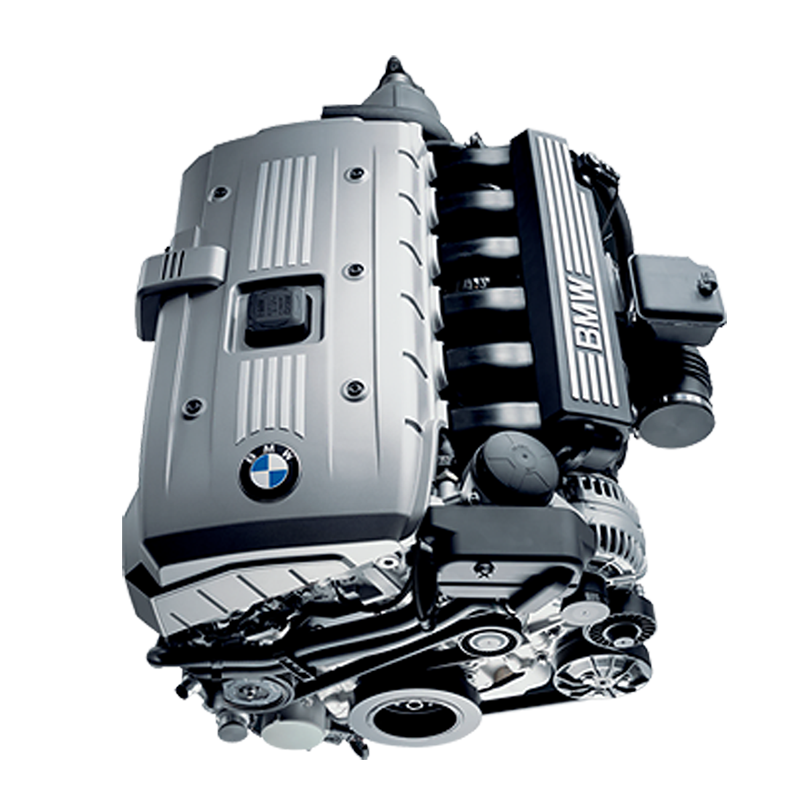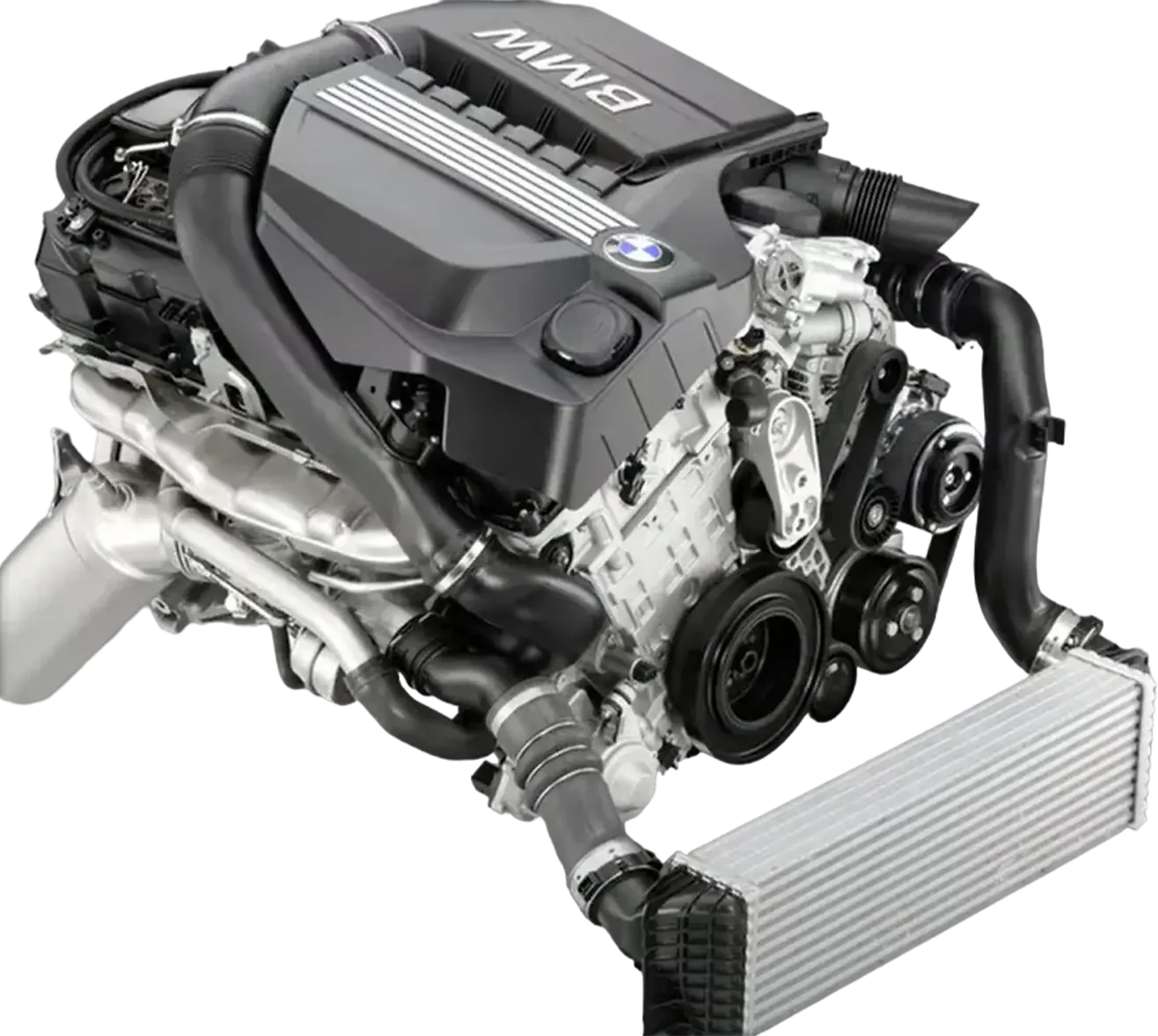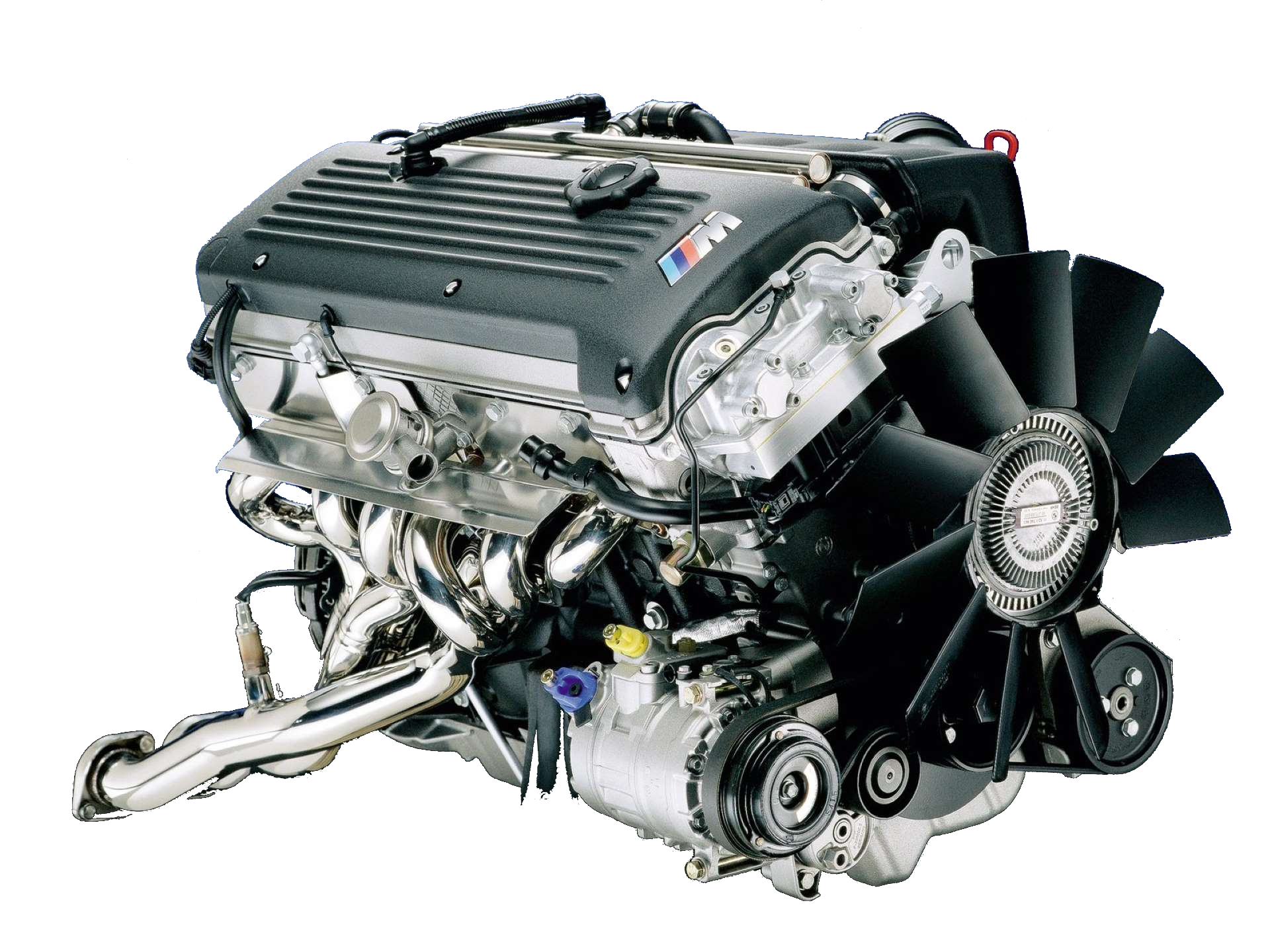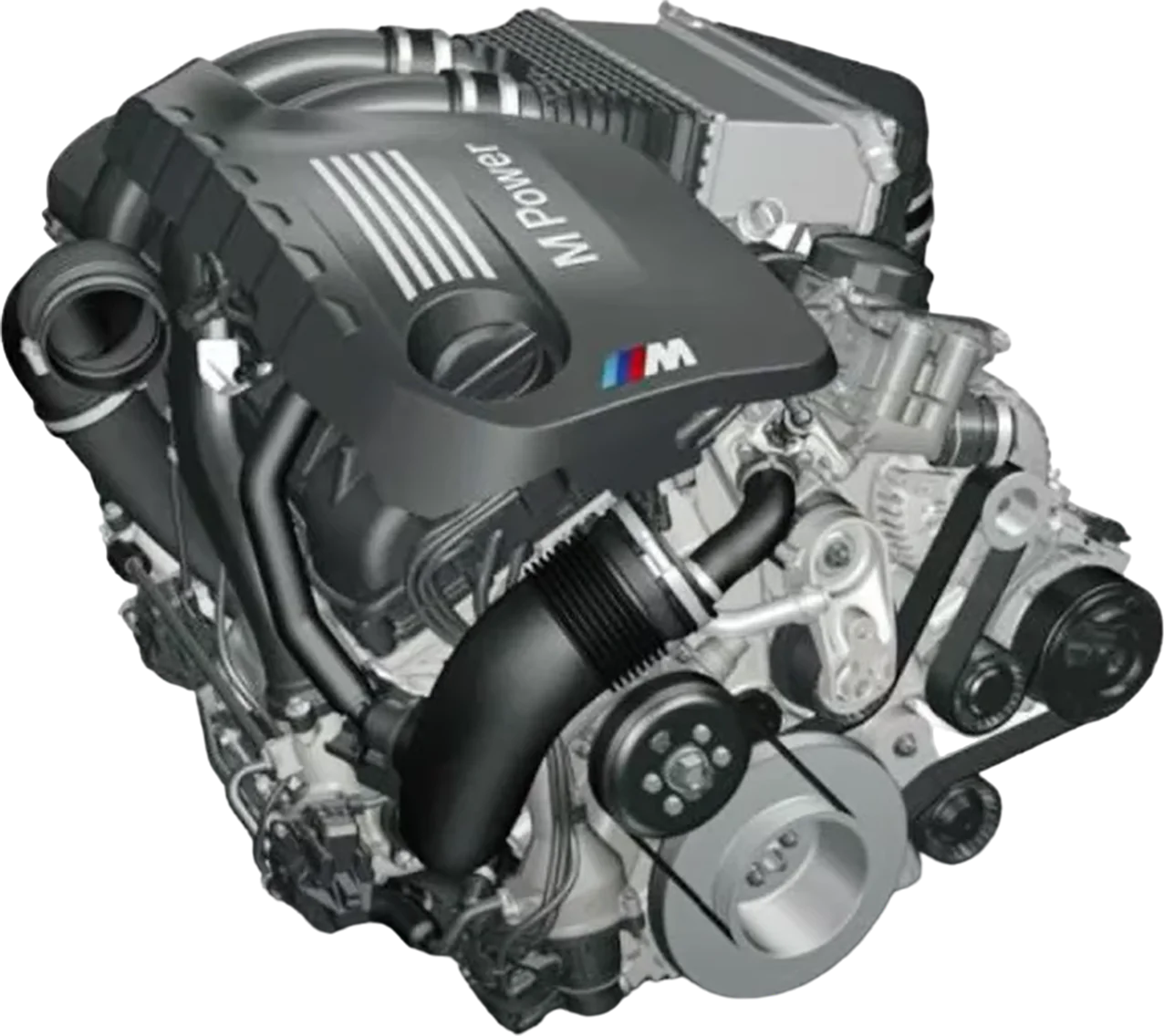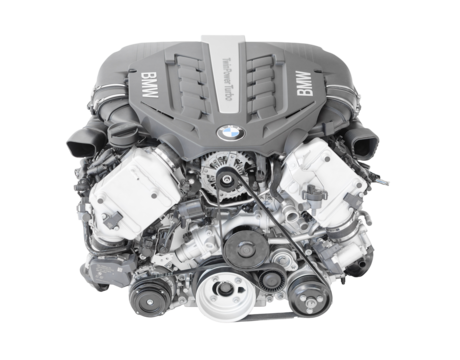Cooling System

Cooling System
Basics
The BMW cooling system is a sophisticated and precision engineered network of componentsthat plays a critical role in maintaining engine performance, efficiency, and longevity. Designed to handle the unique demands of BMW’s high-performance engines, particularly turbocharged models like the N54, N55, N63, Etc. this system ensures the engine operates within a specific temperature range. Operating outside this range—whether too hot or too cold—can lead to serious engine damage, reduced performance, or increased emissions.
Water Pump
The water pump is the driving force behind the cooling system, circulating coolant through the engine, radiator, and back to the engine. Unlike traditional belt-driven water pumps, most modern BMWs, especially those with N-series engines like the N54, use electric water pumps. These pumps are electronically controlled to deliver precise coolant flow based on engine load and temperature, improving efficiency.
- Why It’s Important: Without a functioning water pump, coolant cannot circulate, leading to rapid overheating, engine damage, or even complete failure.
- Common Issues: Electric water pumps can fail without warning, often due to electrical faults or wear on the motor. Sudden overheating or a “coolant temperature” warning light are common symptoms of failure.
Inspection
Monitor for signs of failure, such as overheating, fluctuating temperature readings, or a “coolant system malfunction” warning. Listen for unusual noises from the pump area.
Replacement
Replace the water pump preventively every 60,000–90,000 miles. Electric water pumps often fail suddenly, so it’s better to replace them during scheduled maintenance.
Tip
When replacing the water pump, also replace the thermostat to ensure compatibility and avoid revisiting the system later.
Electric Water Pump
- Newer BMW models often use electric water pumps, which allow for more precise control of engine temperature. While efficient, these pumps can fail unpredictably. Pierburg and GRAF offer high-quality replacement options for electric water pumps.
Mechanical Water Pump
- Older BMWs (and some diesel engines) typically use mechanical water pumps. Upgrading to a high-flow water pump from EMP Stewart can improve cooling efficiency and is a popular choice for older BMWs or performance applications.
Radiator
The radiator is the cooling system’s heat exchanger, dissipating heat from the coolant as it passes through the thin tubes and fins. It works in conjunction with the radiator fan to cool the fluid before it re-enters the engine. Radiators are typically made of aluminum with plastic end tanks, which can be prone to cracking or leaking over time.
- Why It’s Important: The radiator prevents coolant from overheating, which helps maintain a stable engine temperature even during heavy loads or hot conditions.
- Common Issues: Over time, radiators can develop leaks at the seams or end tanks. Additionally, dirt, debris, or bent fins can reduce airflow and cooling efficiency.
Cleaning
Keep the radiator clean by gently brushing away dirt or debris. Avoid using high-pressure water, which can damage the fins.
Inspection
Look for leaks at the seams or cracks in the plastic end tanks. Inspect for bent fins or clogs that could restrict airflow.
Tip
Replace the radiator if leaks or severe clogging are found. Consider upgrading to a higher-capacity radiator if you drive in extreme conditions or have a tuned engine.
Thermostat
The thermostat regulates coolant flow within the system, ensuring the engine warms up quickly and maintains the ideal operating temperature. It stays closed during cold starts, allowing the engine to heat up faster. Once the engine reaches the proper temperature (typically 190–220°F), the thermostat opens to allow coolant flow through the radiator.
- Why It’s Important: A properly functioning thermostat ensures the engine doesn’t overheat or operate too cold, which can lead to poor fuel efficiency and increased wear.
- Common Issues: A stuck-closed thermostat can block coolant flow to the radiator, causing overheating, while a stuck-open thermostat keeps coolant flowing even when it’s not needed, leading to overcooling.
Inspection
Watch for signs of failure, such as overheating (stuck closed) or prolonged engine warm-up times (stuck open). Check for error codes related to coolant temperature.
Replacement
Replace the thermostat every 60,000–90,000 miles or when replacing the water pump.
Tips
Use OEM thermostats to ensure compatibility with the cooling system and proper temperature regulation.
Coolant Expansion Tank
The coolant expansion tank stores excess coolant and accommodates thermal expansion as the coolant heats up. It’s typically made of plastic and includes a pressure cap that ensures the system maintains the correct pressure for efficient operation. The expansion tank is also where you check and top off your coolant level.
- Why It’s Important: The expansion tank allows the cooling system to maintain consistent pressure and prevents coolant overflow during operation.
- Common Issues: Over time, plastic expansion tanks can develop cracks due to heat and pressure cycles, leading to leaks and loss of coolant.
Inspection
Regularly check for cracks or leaks around the expansion tank and its connections. Check the coolant level when the engine is cold, ensuring it is between the “min” and “max” lines.
Replacement
Replace the expansion tank if cracks or leaks are present, as even minor damage can lead to sudden failure.
Tip
Always use the correct pressure cap to ensure the system maintains the proper operating pressure.
Hoses and Clamps
The hoses and clamps connect the various components of the cooling system, ensuring smooth coolant flow. These include the upper and lower radiator hoses, heater hoses, and smaller auxiliary hoses. Clamps secure the hoses and prevent leaks.
- Why It’s Important: Hoses and clamps ensure the coolant flows freely without leaks, maintaining system integrity and pressure.
- Common Issues: Hoses can degrade, crack, or swell due to age and heat exposure, while clamps can loosen or corrode, leading to leaks at connection points.
Inspection
Check hoses for cracks, swelling, or soft spots, especially near connection points. Ensure clamps are tight and free of corrosion.
Replacement
Replace hoses and clamps every 60,000–100,000 miles or as needed. Preventive replacement is better than waiting for a failure.
Tip
Use high-quality replacement parts to avoid premature wear and ensure a secure seal.
Coolant
Coolant, also known as antifreeze, is a special liquid that absorbs heat from the engine and prevents the cooling system from freezing in cold weather or boiling in hot conditions. BMW specifies a specific formula that includes corrosion inhibitors to protect the aluminum and plastic components of the cooling system.
- Why It’s Important: Proper coolant ensures optimal heat transfer, prevents rust and corrosion, and protects the engine and cooling system components.
- Common Issues: Using the wrong type of coolant or neglecting coolant replacement can lead to poor cooling performance, rust buildup, or damage to components.
Coolant Type
Always use BMW-approved coolant mixed with distilled water in a 50/50 ratio. Never mix different types of coolant, as it can cause chemical reactions that damage the system.
Flush Interval
Flush the coolant system every 2–4 years to remove contaminants and maintain proper cooling performance.
Tip
After any coolant replacement or repair, properly bleed the system to remove air pockets that can cause overheating or erratic temperature readings.
Heater Core
The heater core is a small radiator-like component located inside the cabin of your BMW. It uses hot coolant from the engine to warm the air blown into the cabin, providing heat for passengers. It also plays a role in defrosting the windshield by supplying warm air to the defroster vents.
- Why It’s Important: The heater core not only provides cabin heat but also serves as an auxiliary cooling device for the engine. A properly functioning heater core is critical for comfort and safety, especially in cold climates.
- Common Issues: Heater cores can develop leaks or become clogged due to sediment or rust in the coolant. Symptoms of a failing heater core include a sweet smell in the cabin, fogged-up windows, or a lack of heat from the vents.
Inspection
Monitor for symptoms of heater core issues, such as reduced cabin heat, coolant smell in the cabin, foggy windows, or visible coolant leaks under the dashboard.
Flushing
Periodically flush the coolant system to remove debris or sediment that can clog the heater core. This should be done every 2–4 years during regular coolant replacement.
Replacement
If the heater core is leaking or clogged, and all other options have been exhausted the heater core must be replaced. This can be a labor-intensive process, as the heater core is located behind the dashboard.
Tip
Use BMW-approved coolant to prevent corrosion and sediment buildup, which are common causes of heater core failure. Address any signs of coolant contamination promptly to prevent damage.
Coolant Expansion Tank Cap
The coolant expansion tank cap is a small but vital component of the cooling system. It’s designed to seal the expansion tank and maintain the proper pressure within the cooling system. The cap contains a pressure relief valve that allows excess pressure to escape, protecting the system from over-pressurization.
- Why It’s Important: The cap ensures that the cooling system operates at the correct pressure, which raises the boiling point of the coolant and prevents overheating. If the cap fails, the cooling system may lose pressure, causing coolant to boil and reducing cooling efficiency.
- Common Issues: Over time, the rubber seals on the cap can degrade, or the pressure relief valve can fail, leading to coolant leaks or improper system pressure. A faulty cap can result in overheating, coolant loss, or even catastrophic failure of other components.
Inspection
Regularly inspect the cap for signs of wear or damage, such as cracked rubber seals or corrosion around the edges. Look for signs of coolant leaks around the cap or the expansion tank.
Replacement
Replace the cap every 60,000–90,000 miles or as part of regular cooling system maintenance. A failing cap can lead to more significant issues with pressure loss.
Tip
Always use an OEM or BMW-approved expansion tank cap to ensure proper fit and pressure rating. Avoid over-tightening, as this can damage the seals or the expansion tank itself.
Preventive Maintenance Tips for BMW Cooling Systems
- Regular Fluid Changes: Replace coolant according to BMW’s recommended intervals to prevent contamination and overheating.
- Use OEM or High-Quality Parts: OEM water pumps, thermostats, and expansion tanks last longer and are more reliable.
- Inspect for Leaks Regularly: Check hoses, radiator, and expansion tank for leaks or signs of aging.
- Address Codes Promptly: Cooling system trouble codes often precede overheating; early attention can prevent serious engine damage.














